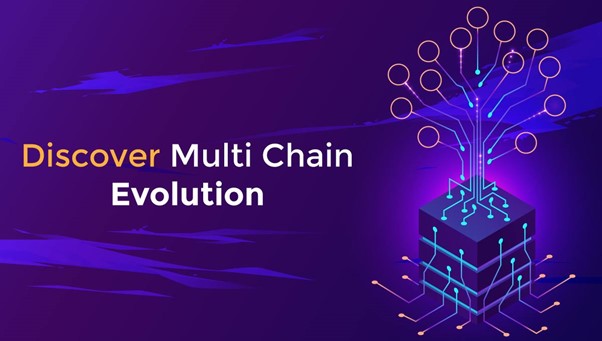UK data watchdog urges vigilance amid heightened cyber threat

Asked about the potential for a Russia-Ukraine cyber conflict spreading to the
UK, Edwards said: “We have picked up on that heightened threat environment and
we think it’s really important to take the opportunity to remind businesses of
the importance of security over the data that they hold. This is a different era
from blacking out the windows and keeping the lights off. The threats are going
to come in through your inbox.” Edwards said that outside the Ukraine conflict
and the warnings it had brought of a heightened security threat, the Information
Commissioner’s Office had seen a “steady and significant” increase in
cyber-attacks against UK businesses over the past two years. Between July and
December last year the ICO recorded 1,345 “cybersecurity incidents”, including
ransomware attacks, where assailants demand payment in cryptocurrency to decrypt
a target’s computers, and phishing attacks, where the victim is tricked, often
via email, into downloading malware or handing over their login
details.
10 enterprise AI trends for 2022

After companies are successful at initial proofs of concept, they often build AI
centers of excellence to operationalize the technology and build talent,
expertise, and best practices. But once a company reaches a level of critical
mass, then it makes sense to break up some of these centers of excellence and
federate AI, moving experts directly into the business units where they are
needed most. “For those companies that are less mature, there is value in having
a center of excellence that is housing talent and learning across the
institution,” says McKinsey’s Singla. “Without that, companies usually don’t
have the ability to scale. Talented people want to be with other like-minded
people. And less experienced people benefit from being in a center of excellence
because they can grow or learn.” Distributing them too early would dilute their
impact and reduce a company’s ability to iterate and duplicate successful
projects across multiple business lines. “But as you get to a layer of maturity
and scale, longer-term, the benefit of technologists having both a deep AI
expertise and domain expertise is a real home run,” he says.
We Aren't Sure If (Or When) Artificial Intelligence Will Surpass the Human Mind

If and when AI reaches the point where it can continually improve itself, the
fate of our species could depend on the actions of this superintelligent
machine, warns Nick Bostrom, a University of Oxford philosopher, in his book
Superintelligence: Paths, Dangers, Strategies. Yet that fate might not
necessarily be a dismal one. The experts also point out that superintelligent
AI could offer a solution to many of our problems. If we can’t figure out how
to tackle climate change, eradicate poverty and ensure world peace, perhaps AI
can. “This remarkable technology has the potential to help everybody live
healthy, wealthy lives so humanity can flourish like never before,” says
Tegmark, who is also the founder of the Future of Life Institute, an
organization that aims to ensure these positive outcomes. Yet, he adds, it
“might wipe out humanity if its goals aren’t aligned with ours.” Or as Bostrom
put it in Superintelligence, when it comes to confronting an intelligence
explosion, “We humans are like small children playing with a bomb.”
Researchers Devise Attack for Stealing Data During Homomorphic Encryption

The attack technique that the researchers at NC State developed involves a
vulnerability in a Microsoft implementation of fully homomorphic encryption
called Microsoft Simple Encrypted Arithmetic Library (SEAL). Microsoft SEAL is
a collection of encryption libraries for performing computing operations on
encrypted data. The vulnerability, which the researchers have described as a
"power-based side-channel leakage" is present in the SEAL homomorphic
encryption library through version 3.6 of the technology, according to the
researchers. It enables attackers to use a single power measurement from the
device doing the encryption operations to extract data in plaintext while the
data is being homomorphically encrypted. The vulnerability allows attackers to
listen to the machine doing the encryption and infer if a 0 bit is being
processed or a 1 bit, Aysu says. "It's a few lines in the software code that
give out the data being executed on the device," he says. "This information
allows us to use some fancy equations and figure out the secret messages being
encrypted in a homomorphic encryption scheme."
How Kubernetes and Database Operators Drive the Data Revolution

Big, centralized application backends just could not provide the flexibility
required to scale from thousands to millions of requests per second. Most of
us probably can remember at least a couple of cases when “monolithic” web
applications were experiencing severe performance issues after going viral.
The solution to this problem came from adapting an approach where
organizations split these monoliths into smaller “micro” services running on
docker containers that can be horizontally scaled both independently of each
other and much quicker than monoliths. With each microservice adding to the
demand on development operations, this strategy, however, wouldn’t be so
successful without container orchestration frameworks like Kubernetes.
Introduced publicly in 2014, Kubernetes, formerly known inside Google as Borg,
quickly proved itself as a top choice for automating deployment workflows and
today is one of the industry standards for modern development operations.
Also, being an open source, cloud native component, Kubernetes continues to
evolve and improve.
The best is yet to come: What’s next for blockchain and the creator economy

The rise in creative energy has inspired the developer community as well. New
niche streaming platforms have grown up, helped by the emergence of low-cost
decentralized infrastructure that allows application builders to encode video,
store data and handle identity without having to pay expensive centralized
cloud providers for such services. These centralized providers will
increasingly find themselves on the defensive. Two attention-grabbing
incidents in 2021 are illustrative: Hackers attacked Twitch and released
private information about its code and its users to the world. And, Facebook
suffered colossal reputational damage from a lengthy outage and whistleblower
claims that its management has repeatedly chosen to prioritize profit over
safety. Big Tech’s woes and pandemic-related restrictions have sped up
fundamental changes already underway in how the world produces, consumes and
uses video content — changes likely to propel growth in the creator economy
well into the future.
Harvard census identifies most commonly used open source packages

The census is broken down into eight ranked lists. Four include version
numbers and four are version agnostic. Packages that use the default
JavaScript npm package manager have been split out from non-npm packages.
There are also separate lists for packages that are directly called by
developers versus those that are indirectly called as dependencies, bringing
attention to the kinds of deeper dependencies that are more difficult for
developers to observe within their environments. These lists “represent our
best estimate of which FOSS packages are the most widely used by different
applications, given the limits of time and the broad, but not exhaustive, data
we have aggregated,” the report notes. While the census does not attempt to
identify the riskiest OSS projects, it does note that “measuring risk profiles
is a separable task, and it’s easier to do it once the most widely used
software is identified.” That work will require cross-industry effort and will
depend on the individual risk profile of the consuming organization.
Multi-Chain Evolution: Why Blockchain’s Future is Interoperable

One project with interoperability at its heart is Spherium. Not only has the
startup developed a cross-chain bridge, but its incubation program HyperLaunch
facilitates the seamless entry of innovative blockchain projects into the
cross-chain ecosystem. Spherium also has its own cross-chain DEX, which
supports trading among tokens between EVM and Non-EVM compatible chains. To
date, Spherium has partnered with leading NFT, DeFi, P2E, and general
blockchain projects. The alliance seeks to “expand the multi-chain experience
for creators and buyers to bridge major blockchains and add certain defi
functionalities into their platform.” Through HyperLaunch, Spherium offers
projects the opportunity to integrate a bridge solution into their core
functionality and enable the deployment of their native tokens on different
networks. With the audited Spherium bridge, token swaps can take less than one
minute currently and is free to use for projects in the HyperLaunch program.
Geared towards defi, NFT and meta-world platforms, the incubation program
offers more than just bridge access; staking and dual-farming solutions are
also provided, along with extensive technical support.
Finance firms scrape alternative data from unexpected sources

In light of the "Great Resignation" and unprecedented job mobility in part
sparked by the pandemic, such data about job happiness is "top of mind for
investors today," Lopata said. Another timely use for alternative data is
tracking how inflation in the U.S. is disrupting markets. Thinknum is
following used car sales on CarMax and Carvana, two of the big auto sales
apps. "We're tracking all that data in real time down to a VIN number, so that
allows you to understand whether prices are peaking," Lopata said. "Beyond
just tracking the peaks … we're tracking when the peak ends." "We're able to
identify that in January '22, we finally started to see some decrease in
pricing," she added. Other current market trends for which Thinknum is digging
up alternative data include changes in the food delivery services business and
cryptocurrency price fluctuations, where the vendor has discovered that
GitHub, the provider of internet hosting for software development, is a prime
source of data. "We've been looking at where we can find a signal before it
hits the market," Lopata said.
How AI and Analytics Help Organizations Deliver a Better Customer Experience
Technology that allows companies to analyze and deliver data where it’s needed
and at the right time is crucial to producing a better customer experience. To
achieve this, companies need a data architecture that provides a highly
granular view of their customers. The architecture must be flexible and
adaptable, so new data can be incorporated and changes can be made without
causing major technological upheavals. The problems we face chasing
omniscience about customers are constantly evolving. The tools and solutions
evolve to keep pace. The data architecture we implement must handle these
changes in a forgiving manner. Additionally, the architecture must make data
available to developers, analysts, and other staff to use whenever they need
it in a way that protects the integrity and security of the individual data
event. A data fabric brings together data of all forms — from the edge to the
cloud — and provides services for discovery, governance, quality, and
transformation. This architecture truly puts data to use at scale to improve
customer experiences.
Quote for the day:
"Don't let a bad day make you feel
like you have a bad life." -- Joubert Botha
Thanks very much for sharing and welcome
ReplyDelete